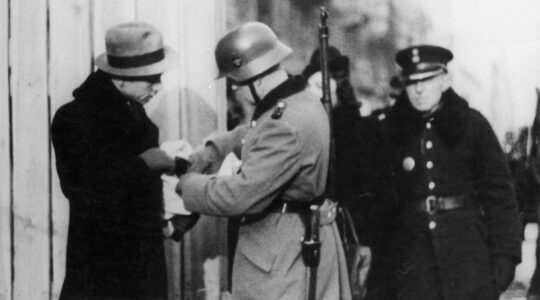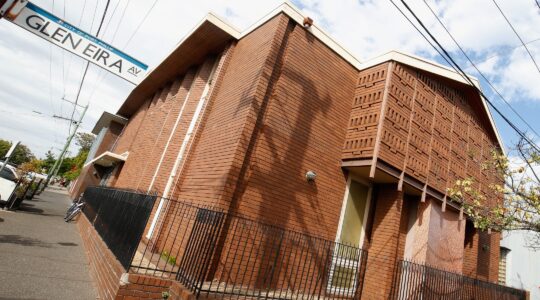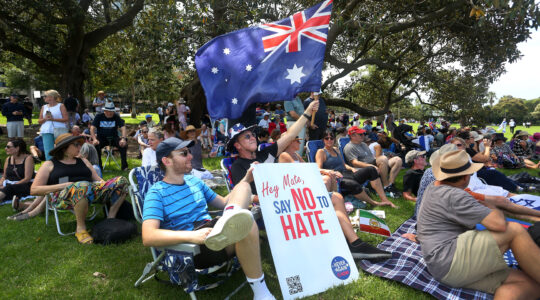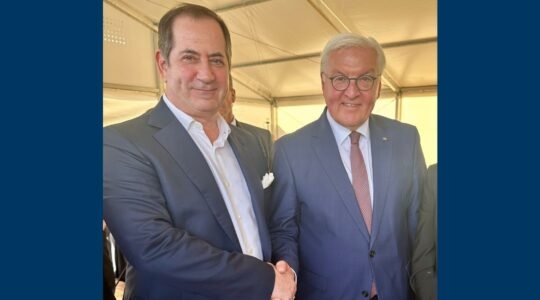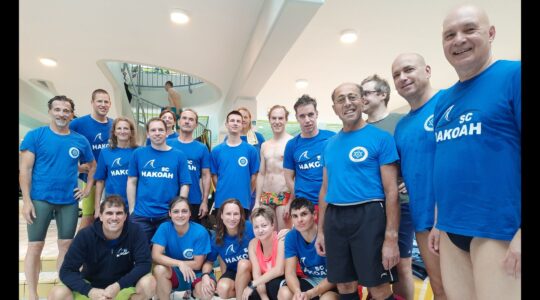(JTA) — Arkady Wajspapir, a key figure in the 1943 uprising at the Sobibor death camp, died in Kiev at the age of 96.
Wajspapir killed at least one Nazi soldier during the uprising — the most bold and daring act by Jewish inmates, according to the United States Holocaust Memorial Museum.
He died on Thursday, the Federation of Jewish Communities of Russia wrote in a statement about the Red Army veteran.
The uprising at the camp in eastern Poland broke out on Oct. 14, 1943. It got off the ground after the arrival to Sobibor of several Red Army veterans with combat experience, including Wajspapir and Aleksandr “Sasha” Aronovich Pechersky. The group had amassed weapons made from work tools and acted on a plan which included neutralizing guards and commanders at several crucial points that would allow for a mass escape.
The Sobibor Uprising, which took the German guards by utter surprise with tools whose use they authorized, is widely considered a symbol both of the courage of Jewish resistance fighters and the Nazis’ complacency and confidence of their ability to prevent or suppress any actions by them.
Wajspapir was also one of four inmates who gave the signal for the uprising, in which 11 SS officers were killed and 300 inmates escaped.
Wajspapir was ordered to kill an SS soldier and a Ukrainian guard in the tailor workshop together with the Pole Jehuda Lerner.
Armed with axes, Wajspapir and Lerner, both severely emaciated, hid behind a curtain at the workshop in wait for SS officer Siegfried Graetschus, the leader of the Ukrainian guards. An hour into the ambush, Graetschus stopped at the door and tried on a coat that the tailors had made for him. “I stepped from behind the curtain, walked past the officer to the door, turned around and hit him on the head with the sharp edge of the axe,” Wajspapir recalled in an interview in 1975 about the uprising.
Out of the inmates who fled the camp, only 53 escaped the search-and-destroy raids the Nazis carried out in retribution. Of those, only a handful are still alive today.
All of Wajspapir’s immediate family was murdered in the Holocaust.
“We split up into groups and took off in different directions. Our group, consisting of eleven Soviet prisoners, went in the direction of the northeast,” Wajspapir said of his escape, which ended when he joined resistance fighters. After the war he returned to Donetzk and resumed his profession of engineer.
“The memory of the courage demonstrated by Wajspapir and his comrades will live on for posterity and the Jewish community of Russia will continue to do every possible effort to make sure this happens,” the Federation of Jewish Communities of Russia wrote in a statement.
Later this month, the Moscow Jewish Museum and Tolerance Center is scheduled to host an international symposium in memory of the uprising ahead of its 75th anniversary. Russian President Vladimir Putin is scheduled to attend the event.

Help ensure Jewish news remains accessible to all. Your donation to the Jewish Telegraphic Agency powers the trusted journalism that has connected Jewish communities worldwide for more than 100 years. With your help, JTA can continue to deliver vital news and insights. Donate today.
